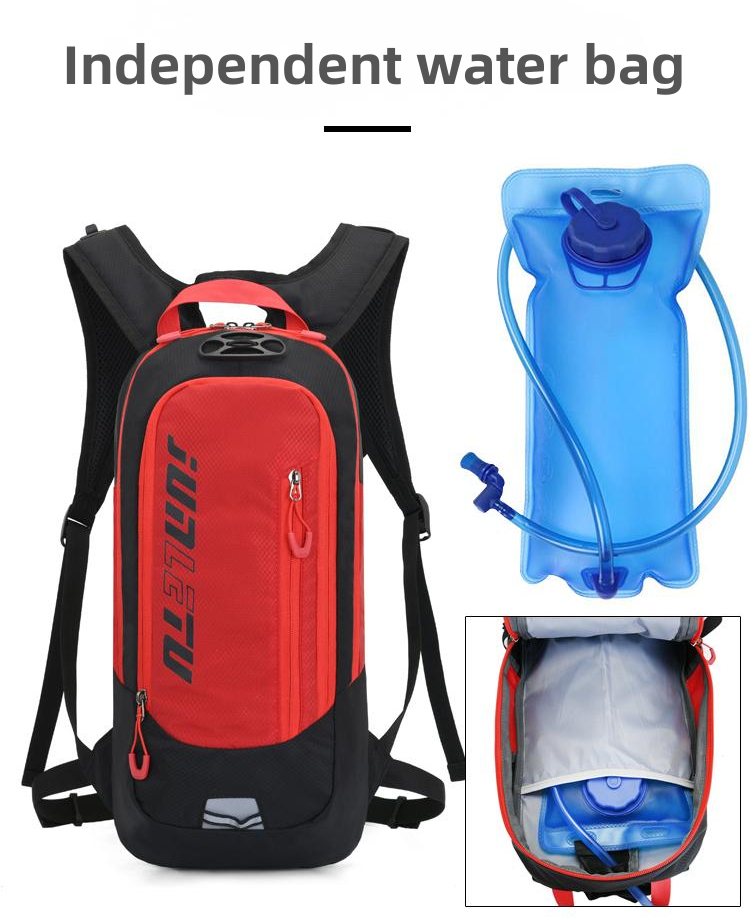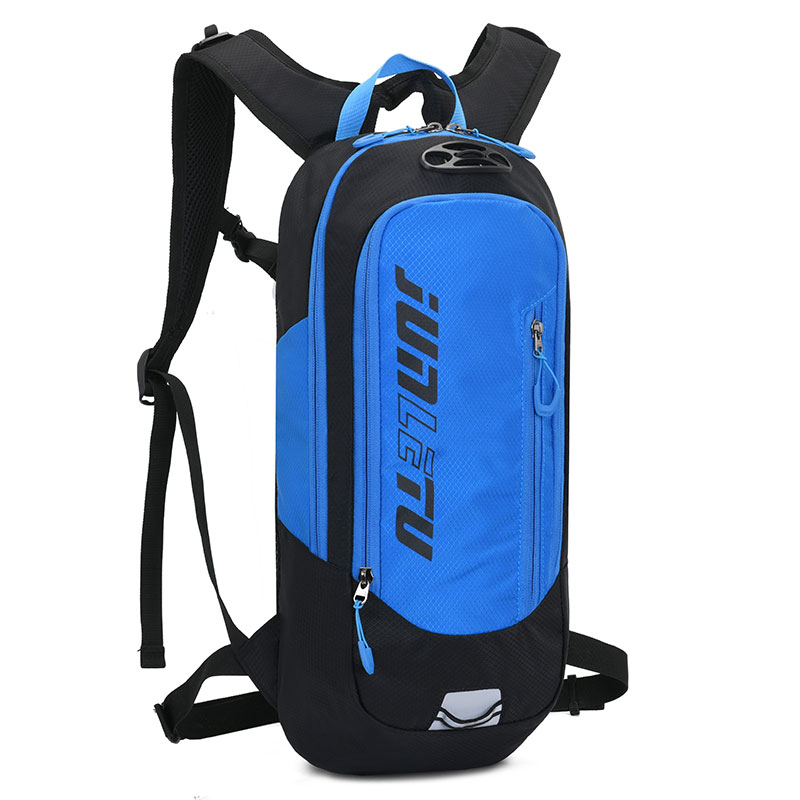As a passionate runner and seasoned outdoor gear enthusiast, I’ve tackled over a dozen marathons and helped countless running buddies choose their equipment. One question that pops up repeatedly when discussing marathon backpacks is: Does a marathon backpack really need a hydration bladder? It sounds straightforward, but the answer hinges on running habits, race conditions, and personal needs. Today, I’m diving deep into this topic from a runner’s perspective, blending my experiences with solid data to weigh the pros and cons of hydration bladders. My goal? To help you make an informed choice and avoid gear mishaps!
Why Is the Hydration Bladder Such a Hot Topic?
Hydration is non-negotiable during a marathon. A full marathon (42.195 kilometers) can lead to 2-3 liters of fluid loss, and improper hydration risks dehydration, cramps, or worse. Traditionally, runners rely on race aid stations for water or sports drinks, but these stations vary in frequency and reliability. This inconsistency has pushed many to consider hydration bladders—soft water reservoirs tucked inside backpacks, accessible via a drinking tube.
Hydration bladders allow runners to sip water on the go without stopping, freeing up their hands. But they’re not without drawbacks, like added weight, cleaning challenges, and comfort issues. So, is a hydration bladder worth it? Let’s break it down step by step.

Advantages of a Hydration Bladder Backpack
Let’s start with the upsides. Here are the key benefits I’ve found:
On-Demand Hydration, Hands-Free: The drinking tube lets you sip without pausing to grab a bottle or hit an aid station. Studies suggest 500-800 milliliters of water per hour helps sustain performance, and a bladder enables small, frequent sips to avoid overdrinking.
Larger Capacity for Long Runs: Unlike bottles (typically 500-750 milliliters), bladders hold 1-2 liters, ideal for full marathons or ultramarathons (50+ kilometers). In races with sparse aid stations, a bladder can be a lifesaver.
Versatility: Most hydration backpacks have multiple pockets for energy gels, phones, keys, and more, streamlining your gear.
Stability and Comfort: Well-designed bladders hug the body, minimizing bounce. Compared to handheld bottles, they’re less likely to disrupt your running form.
My Story: During my first Xiamen Marathon in 2019, crowded aid stations meant long waits for water, costing me precious time. Switching to a 1.5-liter hydration backpack transformed my experience—hydration was seamless, especially in the grueling second half, shaving nearly 10 minutes off my time.
Drawbacks of a Hydration Bladder Backpack
Hydration bladders aren’t flawless. Here are some common pitfalls:
Added Weight: A bladder plus backpack (empty weight: 200-500 grams; full: up to 2 kilograms) increases your load. According to Runner’s World, carrying over 1.5 kilograms can reduce running efficiency by 5-10%.
Cleaning Challenges: Bladders can harbor bacteria if not cleaned properly, which is a hassle. Neglect this, and you risk funky-tasting water or health issues.
Comfort Concerns: Some backpacks cause chafing or pressure during long runs, especially in hot weather when sweaty backs feel stifled.
Learning Curve: Newbies may need time to master the bladder, like adjusting the tube or pacing their sips.
My Lesson: Once, during a half-marathon, I borrowed a friend’s hydration backpack but didn’t adjust the straps properly, ending up with red marks on my back. It taught me that comfort varies by person, and testing fit is critical.

Hydration Bladder vs. Other Hydration Options
To decide on a bladder, let’s compare it to other hydration methods. Here’s a breakdown:
|
Hydration Method |
Pros |
Cons |
Best For |
|---|---|---|---|
|
Hydration Backpack |
Hands-free, large capacity, frees hands, carries extra gear |
Heavier, tough to clean, potential comfort issues |
Full marathons, ultramarathons, races with sparse aid stations |
|
Handheld Bottle |
Lightweight, easy to clean, no backpack, budget-friendly |
Limited capacity (500-750ml), affects running form, hand fatigue |
Half-marathons, short training runs |
|
Waist Belt Bottle |
Even weight distribution, doesn’t affect upper body, easy access |
Smaller capacity (under 1 liter), possible bouncing, waist discomfort |
Half-marathons, full marathons, training |
|
Aid Stations |
No gear to carry, free, ideal for minimalists |
Inconsistent spacing, crowded, unpredictable water quality |
Races with frequent aid stations (e.g., urban marathons) |
My Advice: For half-marathons (21.1 kilometers) or races with frequent aid stations, a waist belt or aid stations often suffice. But for full marathons, ultramarathons, hot weather, or races with limited support, a hydration backpack shines.
When Do You Need a Hydration Bladder?
A bladder isn’t always necessary—it depends on your running context. Here are scenarios where a bladder makes sense:
Long-Distance Races (Full Marathon and Beyond): A full marathon takes 2-5 hours, with significant fluid loss. Aid stations are typically every 5 kilometers, but crowds or shortages can disrupt your rhythm. A bladder ensures consistent hydration, especially in the tough later miles.
Hot or Humid Conditions: Heat accelerates sweating, demanding more frequent hydration. The American College of Sports Medicine recommends 800-1200 milliliters per hour in hot weather, making a bladder’s capacity ideal.
Races with Sparse Aid Stations: Trail marathons or smaller races may have aid stations 10 kilometers apart. A bladder is practically essential here.
Custom Hydration Needs: If you prefer specific sports drinks or need timed electrolyte intake, a bladder lets you carry tailored fluids.
When Can You Skip the Bladder?
Half-Marathons or Shorter: These take 1-2 hours, and aid stations or a waist belt usually cover your needs.
Races with Dense Aid Stations: Major races like Beijing or Shanghai Marathons have stations every 2.5-5 kilometers, making extra gear unnecessary.
Minimalist Runners: If you prioritize speed and lightness, a handheld bottle or waist belt might suit you better.
My Experience: At the Hangzhou Marathon, aid stations were every 2.5 kilometers and well-stocked, so a 500-milliliter handheld bottle was enough. But during a 50-kilometer trail race, my 2-liter bladder got me through a 20-kilometer stretch without support.

How to Choose the Right Hydration Backpack?
If you opt for a hydration bladder, picking the right one is crucial. Here’s what to consider:
Capacity: Match the bladder size to your race. Half-marathons: 0.5-1 liter; full marathons: 1-1.5 liters; ultramarathons: 1.5-2 liters.
Weight and Fit: Choose lightweight materials (e.g., nylon) and ensure a snug fit to reduce bouncing. Test adjustable shoulder and chest straps.
Breathability: Look for backpacks with mesh panels to minimize heat buildup.
Storage: Ensure enough pockets for gels, phones, sunscreen, etc.
Bladder Quality: Opt for food-grade silicone bladders with leak-proof tubes and durable valves.
Selection Guide:
|
Feature |
Recommended Choice |
Why |
|---|---|---|
|
Bladder Capacity |
Half-marathon: 0.5-1L; Full marathon: 1-1.5L; Ultramarathon: 1.5-2L |
Matches hydration needs without excess weight |
|
Backpack Weight |
Empty: 200-400 grams |
Reduces strain during long runs |
|
Material |
Nylon with breathable mesh back |
Lightweight, durable, less sweaty |
|
Storage |
2-4 pockets, including waterproof zippers |
Holds essentials securely |
|
Extra Features |
Reflective strips, whistle, quick-release buckles |
Enhances safety (e.g., night runs), simplifies use |
My Tip: Try on the backpack in-store if possible, or check user reviews online for fit feedback. Runners with broader shoulders or larger torsos should double-check strap adjustability.
Using and Maintaining Your Hydration Backpack
A good backpack requires proper use and care. Here are some practical tips:
Usage Tips:
Pre-Race Testing: Use the backpack in 2-3 training runs to get comfortable with the tube and sipping rhythm.
Sip Smart: Drink small amounts (100-150 milliliters) every 10-15 minutes to avoid stomach sloshing.
Mix It Up: Add electrolyte powder or sports drinks, but clean the bladder immediately after use.
Cleaning and Maintenance:
Rinse the bladder with warm water and mild detergent after each use, especially the tube.
Use a cleaning brush or soak with baking soda and vinegar to kill bacteria.
Dry fully by leaving the bladder open to prevent mold.
Storage:
Keep the bladder and backpack in a dry, ventilated spot, away from direct sunlight.
For long-term storage, seal the bladder in a bag to keep out dust.
My Experience: I once skipped cleaning my bladder after a run, and the next time, the water tasted off. Now, I soak it with a cleaning tablet post-run—quick and effective.

Additional Hydration Tips
Beyond the bladder, here are some tricks to optimize hydration:
Pre-Race Hydration: Drink extra water the day before to start fully hydrated, but don’t overdo it to avoid bathroom breaks.
Electrolyte Balance: In heat or long runs, use sodium- and potassium-rich drinks to prevent imbalances.
Listen to Your Body: Thirst, dizziness, or dry skin signal dehydration—sip water and slow your pace.
Simulate Race Conditions: Practice your hydration strategy in training to nail your race-day rhythm.
My Story: During an ultramarathon, I got dizzy at the 30-kilometer mark, realizing I’d neglected electrolytes. Now, I always carry an electrolyte packet in my bladder for long runs, and it’s a game-changer.
Frequently Asked Questions
Here are some common questions from runners to clarify your decision:
Q1: Do I need a hydration backpack for a half-marathon?
A: Usually not. Half-marathons are short enough for aid stations or a waist belt to suffice, unless it’s hot or you have specific needs.
Q2: Does a hydration backpack slow you down?
A: Slightly, especially in fast or short races. Choose a lightweight model and train with it to minimize impact.
Q3: How do I know if a hydration backpack fits me?
A: Test it for snugness and bounce-free movement. Ensure straps are comfortable and adjustable.
Q4: What if my bladder leaks?
A: Check the cap and tube connections for tightness. Persistent leaks may require a new bladder.
Q5: Can I rely solely on aid stations?
A: Yes, if they’re frequent and reliable. For sparse or sensitive stomachs, a bladder offers control.
Final Thoughts
So, does a marathon backpack need a hydration bladder? It depends on your race distance, conditions, and preferences. As someone who’s pounded the pavement for years, I’ve seen how the right gear can make or break a run. A hydration backpack is a powerhouse for long races, hot days, or sparse aid stations, but overkill for shorter, well-supported events. I hope this guide helps you pick the perfect hydration setup for smoother, stronger runs!
Running isn’t always easy, but every stride builds resilience. Got more questions? I’m here to share my insights—let’s keep the journey going!